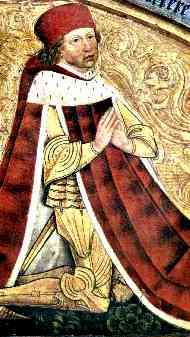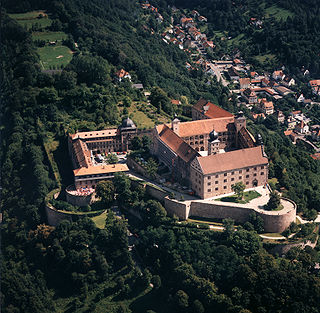

The House of Kotzau was an old minor German noble family in Franconia, Germany.


The House of Kotzau was an old minor German noble family in Franconia, Germany.
The House of Kotzau took its name from the village of Kotzau, today called Oberkotzau and it is located in the district Hof in Upper Franconia. Famous members of the family were abbess in the abbeys of Himmelkron and Hof. Hans von Kotzau fought against the hussites at Wunsiedel in 1430. In Second Margrave War Georg Wolf of Kotzau, originally a knight in the fellowship of Albert Alcibiades, Margrave of Brandenburg-Kulmbach, turned against his prince and supported Henry IV, Burgrave of Plauen. 1553 the town of Hof was besieged, captured and Georg Wolf was appointed to be governor. The family was directly related with the Houses of Guttenberg, Sparneck and Zedtwitz. The last knight died in 1661 in a duel.
The House of Hohenzollern founded the dynasty of the Freiherren of Kotzau, though not related to the knightly family. It was Georg Albrecht, son of Georg Albrecht, Margrave of Brandenburg-Bayreuth-Kulmbach, who entered into a morganatic marriage. For his wife Regina Magdalena Lutz and his descendants the title was created and they received castle and land at Oberkotzau. The Freiherren died out in 1976.

Albert II was the margrave of Brandenburg-Kulmbach (Brandenburg-Bayreuth) from 1527 to 1553. He was a member of the Franconian branch of the House of Hohenzollern. Because of his bellicose nature, Albert was given the cognomen Bellator during his lifetime. Posthumously, he became known as Alcibiades.

George Frederick of Brandenburg-Ansbach was Margrave of Ansbach and Bayreuth, as well as Regent of Prussia. He was the son of George, Margrave of Brandenburg-Ansbach and a member of the House of Hohenzollern. He married firstly, in 1559, Elisabeth of Brandenburg-Küstrin. He married secondly, in 1579, Sophie of Brunswick-Lüneburg, daughter of William of Brunswick-Lüneburg and Dorothea of Denmark.

Albrecht III was Elector of Brandenburg from 1471 until his death, the third from the House of Hohenzollern. A member of the Order of the Swan, he received the cognomen Achilles because of his knightly qualities and virtues. He also ruled in the Franconian principalities of Ansbach from 1440 and Kulmbach from 1464.

Bayreuth is a town in northern Bavaria, Germany, on the Red Main river in a valley between the Franconian Jura and the Fichtelgebirge Mountains. The town's roots date back to 1194. In the 21st century, it is the capital of Upper Franconia and has a population of 72,148 (2015). It hosts the annual Bayreuth Festival, at which performances of operas by the 19th-century German composer Richard Wagner are presented.

Hof is a town on the banks of the Saale in the northeastern corner of the German state of Bavaria, in the Franconian region, at the Czech border and the forested Fichtelgebirge and Frankenwald upland regions. The town has 47,296 inhabitants, the surrounding district an additional 95,000.

Kulmbach is the capital of the district of Kulmbach in Bavaria in Germany. The town, once a stronghold of the Principality of Bayreuth, is renowned for its massive Plassenburg Castle, which houses the largest tin soldier museum in the world, and for its sausages, or Bratwürste.

The Principality of Bayreuth or Margraviate of Brandenburg-Bayreuth was an immediate territory of the Holy Roman Empire, ruled by a Franconian branch of the Hohenzollern dynasty. Since Burgrave Frederick VI of Nuremberg was enfeoffed with the Margraviate of Brandenburg in 1415/17, the Hohenzollern princes transferred the margravial title to their Franconian possessions, though the principality never had been a march. Until 1604 they used Plassenburg Castle in Kulmbach as their residence, hence their territory was officially called the Principality of Kulmbach or Margraviate of Brandenburg-Kulmbach until the Empire's dissolution in 1806.

Plassenburg is a castle in the city of Kulmbach in Bavaria. It is one of the most impressive castles in Germany and a symbol of the city. It was first mentioned in 1135. The Plassenberg family were ministerial of the counts of Andechs and used as their seat the Plassenburg. The House of Guttenberg, a prominent Franconian noble family, traces its origins back to 1149 with a Gundeloh v. Blassenberg (Plassenberg). The name Guttenberg is derived from Guttenberg and was adopted by a Heinrich von Blassenberg around 1310. From 1340, the Hohenzollerns governed from Plassenburg castle their territories in Franconia till 1604. The Plassenburg was fortress and residence for the Hohenzollerns.

Christian, Margrave of Brandenburg-Bayreuth was a member of the House of Hohenzollern and Margrave of Brandenburg-Kulmbach.
The Second Margrave War was a conflict in the Holy Roman Empire between 1552 and 1555. Instigated by Albert Alcibiades, Margrave of Brandenburg-Kulmbach and Brandenburg-Bayreuth, who was attempting to form a Duchy of Franconia under his rule, the war resulted in widespread devastation in Franconia, while also affecting the Rhineland and Lower Saxony.

Johannes Voigt was a German historian born in Bettenhausen, which today is situated in the district of Schmalkalden-Meiningen.

Georg Albrecht of Brandenburg-Bayreuth, was a German prince and member of the House of Hohenzollern.

George Frederick Charles, Margrave of Brandenburg-Bayreuth, was a German prince, member of the House of Hohenzollern, nominal Margrave of Brandenburg-Bayreuth-Kulmbach (1708–35) and Margrave of Brandenburg-Bayreuth (1726–35).

Frederick Christian of Brandenburg-Bayreuth, was a member of the House of Hohenzollern and Margrave of Brandenburg-Bayreuth.

Marie of Prussia was a Prussian duchess by birth and Margravine of Brandenburg-Bayreuth by marriage.

Georg Wolf of Kotzau, nicknamed the rich was an Imperial Knight and Amtmann and Governor.

The siege of Hof was an event of the Second Margrave War. The city of Hof was successfully besieged in 1553 by the opponents of the Margrave Albert II Alcibiades of Brandenburg-Kulmbach.

Gravenreuth was a German noble family. The family's origin seat was located in Grafenreuth, now part of Thiersheim in the District of Wunsiedel in Upper Franconia, first mentioned in 1180. Up to the 18th century, the family, supplied with the title Freiherren, was the owner of nearby land and villages, e.g. in the area of Marktredwitz. Lines of the family moved to Upper Palatinate, e.g. in Schlammersdorf. The family is directly related with the House of Sparneck.
Sophie Christiane of Wolfstein was Countess of Wolfstein by birth and Margravine of Brandenburg-Bayreuth-Kulmbach by marriage.

Schloss Kunreuth is situated on the northwestern edge of the eponymous village of Kunreuth which is part of the collective municipality of Gosberg in the county of Forchheim, in the province of Upper Franconia in the south German state of Bavaria.